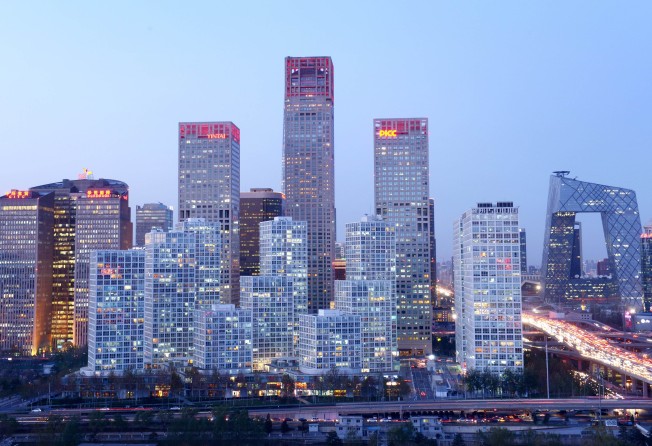China’s red-hot land sales might hurt developers' bottom line: analysts
Mainland firms must keep an eye on their profit margins, not just market share, amid rush to buy increasingly pricey land – netting record proceeds of 167 billion in Beijing alone

Mainland cities’ land-sale revenues reached record highs this year due to soaring prices – a trend that industry analysts fear will erode developers’ profit margins.
Reports on “king lands” – land parcels fetching mega prices – prompted the land ministry to call in officials from 16 cities including Shanghai, Beijing, Guangzhou, Shenzhen, Suzhou, Nanjing, Hangzhou and Tianjin, in September and order them to eliminate misleading price signals and ease expectations of more appreciation.
But listed developers, with bulging war chests following massive fundraising abroad and strong property sales at home, have bid up land prices, particularly in the top-tier cities. To them, sufficient land reserves and growing market share are more important as their share prices are more sensitive to sales contractions than profits.
“We expect [the mainland’s] land market to continue growing in terms of GFA [gross floor area] purchased, but with fewer cases of ‘king land’ bidding as the market is now aware that the regulator is on the lookout for this kind of practice,” said Edison Bian, a property analyst with CCB International in Hong Kong.
The problem of aggressive bidding came to the fore when Sunac China, a mainland developer in which US buyout firm Bain Capital holds a stake, in September bought a prime plot in Beijing for more than 70,000 yuan (HK$89,000) per square metre, the highest ever in the mainland.
Others, such as Evergrande and Kaisa Group, have also been aggressively building up their land reserves in top-tier cities, where home prices have been surging and demand has remained strong despite the government’s tightening efforts.
Such deals have pushed up land sale proceeds in Beijing to 167 billion yuan as of December 5, already exceeding the previous full-year record of 164 billion yuan in 2010 and last year’s 65 billion yuan. To put the figure into perspective, the proceeds are 46 per cent of the city’s planned government revenue for this year.
According to real estate data provider CRIC, proceeds from land sales in 53 other key cities rose 211 per cent in the first 11 months of this year from the same period a year ago to 589.7 billion yuan. At 179 billion yuan, Shanghai raked in the highest revenue.
Apart from a 36 per cent year-on-year rise in total floor space sold, the record revenues were also driven by soaring prices. The average floor space cost per square metre in Shanghai surged 88 per cent in the 11 months from a year ago to 23,303 yuan, the highest ever in the country, according to CRIC.
Vice-minister of land and resources Hu Cunzhi told officials at the September meeting that they needed to include stable land prices, which is a target of a local property tightening campaign, and warned officials to desist from pursuing excessive profits from land sales.
“Land cost has been rising,” said Franco Leung, a property analyst at global ratings agency Moody’s Investors Service. “For some developers, land cost has been rising as a percentage of the total contracted sales [with developers willing to pay more as contracted sales rise].”
Typically, land cost is between one-fifth and one-third of the price of homes built on it. In some extreme cases, it could rise to a half.
“Falling gross profit margin has become an industry trend,” Liu Ning, board secretary of China Merchants Property told the South China Morning Post. “In the future, we need to care more about how to maintain the gross profit margin.”
For instance, Logan Property, the mid-sized developer whose shares will start trading on December 20 in a HK$1.6 billion initial public offering, paid 1,800 yuan per square metre, on average, for the land parcels it bought this year’s first half, almost double the price it paid last year.
Its gross profit margin fell to 31 per cent in the first six months, from 39 per cent last year, although the company said projects sold in the second half would push up profit margin for the full year.
As home prices on the mainland are vulnerable to government policies, developers will need to cut the cost of funding, speed up construction, enhance branding, and optimise product mixes and geographic distribution.
That explains their strong demand for funds in Hong Kong, which is easier and cheaper to get than on the mainland.
Mainland developers raised a total of US$24.5 billion offshore via bonds and loans from January to November 20 this year, according to data from Moody’s.